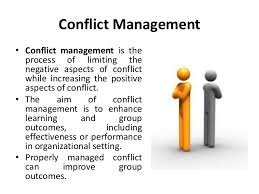.jpg)
Conflict is unpleasant, but sometimes inevitable, in business -- but these 5 approaches can help deal with it.In any situation involving more than one person, conflict can arise. The causes of conflict range from philosophical differences and divergent goals to power imbalances. Unmanaged or poorly managed conflicts generate a breakdown in trust and lost productivity. For small businesses, where success often hinges on the cohesion of a few people, loss of trust and productivity can signal the death of the business. With a basic understanding of the five conflict management strategies, small business owners can better deal with conflicts before they escalate beyond repair.
Accommodating
The accommodating strategy essentially entails giving the opposing side what it wants. The use of accommodation often occurs when one of the parties wishes to keep the peace or perceives the issue as minor. For example, a business that requires formal dress may institute a "casual Friday" policy as a low-stakes means of keeping the peace with the rank and file. Employees who use accommodation as a primary conflict management strategy, however, may keep track and develop resentment.
Avoiding
The avoidance strategy seeks to put off conflict indefinitely. By delaying or ignoring the conflict, the avoider hopes the problem resolves itself without a confrontation. Those who actively avoid conflict frequently have low esteem or hold a position of low power.
Collaborating
Collaboration works by integrating ideas set out by multiple people. The object is to find a creative solution acceptable to everyone. Collaboration, though useful, calls for a significant time commitment not appropriate to all conflicts. For example, a business owner should work collaboratively with the manager to establish policies, but collaborative decision-making regarding office supplies wastes time better spent on other activities.
Compromising
The compromising strategy typically calls for both sides of a conflict to give up elements of their position in order to establish an acceptable, if not agreeable, solution. This strategy prevails most often in conflicts where the parties hold approximately equivalent power. Business owners frequently employ compromise during contract negotiations with other businesses when each party stands to lose something valuable, such as a customer or necessary service.
Competing
Competition operates as a zero-sum game, in which one side wins and other loses. Highly assertive personalities often fall back on competition as a conflict management strategy. The competitive strategy works best in a limited number of conflicts, such as emergency situations. In general, business owners benefit from holding the competitive strategy in reserve for crisis situations and decisions that generate ill-will, such as pay cuts or layoffs.
Image source: Google
Content source: Wikipedia
Hi! I am a robot. I just upvoted you! I found similar content that readers might be interested in:
http://smallbusiness.chron.com/5-conflict-management-strategies-16131.html